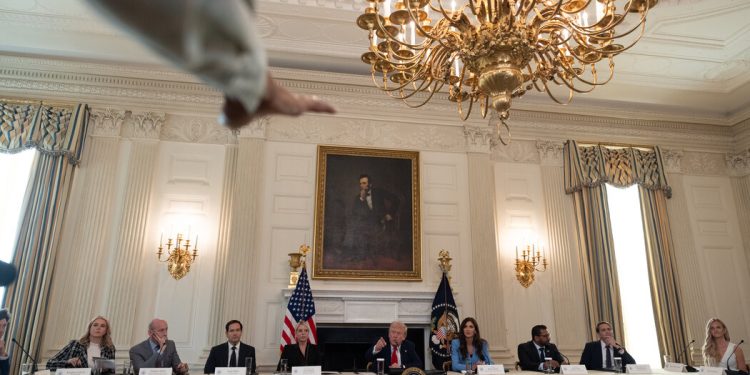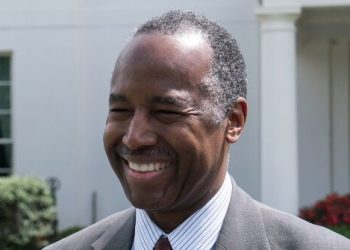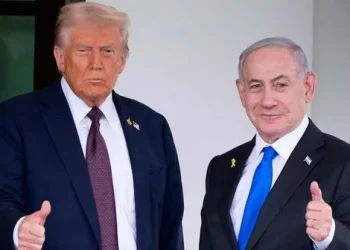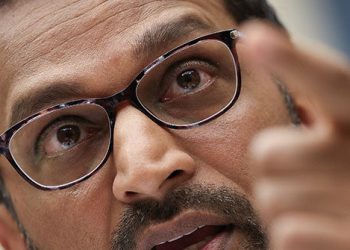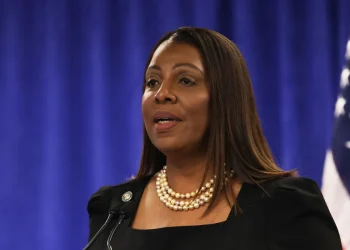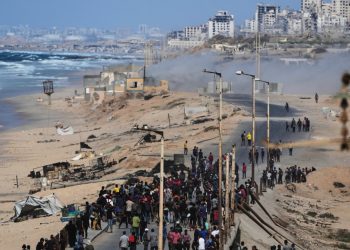President Trump said Wednesday that negotiations over a ceasefire in Gaza and the release of Israeli hostages held by Hamas are “going very well,” and raised the possibility that he will travel to the Middle East this weekend, possibly to mark a ceasefire and the release of the hostages.
His enthusiasm grew late in the afternoon, at a public event in the East Room, when he received a memo from Secretary of State Marco Rubio suggesting that negotiators in Egypt were “very close” — the words were underlined — and asked Mr. Trump to “approve a Truth Social publication soon so you can announce the deal first.”
The president’s comments, combined with Mr. Rubio’s memo, captured by the lens of an Associated Press photographer, constitute the most definitive suggestion yet that the two-year-old conflict may be on the verge of stopping, or even ending. It began with the October 7, 2023 terrorist attack on Israel, which killed approximately 1,100 Israelis, and Israel has since claimed the lives of tens of thousands of Palestinians in Gaza. But the president did not give details on the negotiations, where he is represented by his special envoy, Steve Witkoff, and by his son-in-law, Jared Kushner.
“I might go,” he said, first suggesting he might leave on Sunday, then immediately correcting himself by suggesting his departure might be Saturday evening.
“I will go to Egypt,” he said, referring to the country where negotiations between Israel and Hamas are taking place, under the leadership of Arab states and the United States, represented by Mr. Trump’s special envoy, Steve Witkoff, and his son-in-law, Jared Kushner.
But he added that he would “do the rounds,” which seemed to suggest that he might visit Israel, to celebrate the release of the still living hostages and the bodies of the dead; their release is meant to be the first step in the president’s 20-point plan. Asked if he would travel to the ruins of Gaza – a place where it would be difficult to stay safe – he replied: “I can do it.”
Mr Trump has made no secret of his lobbying for the Nobel Peace Prize, won by three sitting US presidents, Theodore Roosevelt, Woodrow Wilson and Barack Obama. (Jimmy Carter won one in 2002, decades after leaving the White House.)
Although he has cited more than half a dozen conflicts in which he claims to have been the driving force behind peace agreements or cessation of conflicts, he would be able to convincingly demonstrate that he was the driving force behind an agreement in Gaza.
His 20-point plan was both more comprehensive and better thought out than many of his early foreign policy initiatives. “This ceasefire and the release of the hostages — if it happens — only came about because of Trump’s willingness to put pressure on Prime Minister Netanyahu,” said Aaron David Miller of the Carnegie Endowment for International Peace, who has often criticized Mr. Trump’s vagaries in the Middle East. “No president – Republican or Democrat – has ever been harsher on an Israeli prime minister on issues so crucial to his policy or the security interests.”
Last week, Mr. Trump essentially forced Mr. Netanyahu to accept the 20-point plan, including the withdrawal of Israeli troops from Gaza and the creation of a Palestinian-led technocratic group for the region. He told the Israeli prime minister that he could not annex the West Bank or drive all Palestinians out of Gaza.


